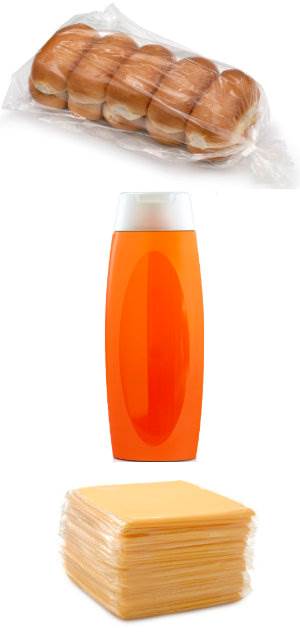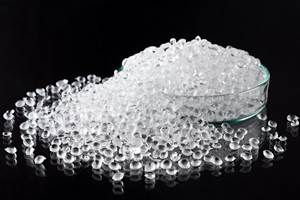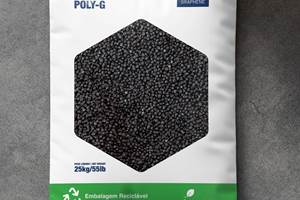Weather Testing For the Real World
Broader use of plastics in building products and a growing desire to minimize painting of automotive parts is increasing the need for reliable predictions of light stability and weathering performance.
Broader use of plastics in building products and a growing desire to minimize painting of automotive parts is increasing the need for reliable predictions of light stability and weathering performance. Accelerated weathering lab instruments and accelerated outdoor test methods are useful tools that give relatively quick answers for R&D, quality control, and material certification. But experts say nothing beats the reality check of natural outdoor testing—even though it takes much longer.
Exposure to heat, cold, UV, and moisture can lead to color changes, surface crazing, chalking, and embrittlement. Failure to test properly for these effects can result in product failures, warranty expenses, lawsuits, and damage to brand reputation.
Avoiding such situations requires two precautions, according to experts at weather testing services such as Intertek Plastics Technology Laboratories and Bodycote Testing Group and at companies like Atlas Materials Testing Technology and Q-Lab Corp., which make accelerated weathering/UV testing devices and also provide testing services. First, manufacturers need to understand the various factors involved in weathering and how they interact. Second, they should carefully design experiments that evaluate those factors—not just weathering conditions and duration, but also material composition—including both the resin and additives.
REAL VS. SIMULATED
The three key approaches to weather testing are long-term natural outdoor exposures, laboratory accelerated weathering, and accelerated outdoor weathering. In many cases, a standard test is dictated by regulations or industry convention (i.e., ASTM, SAE, ISO). Companies also have to consider the time they have available for testing before production decisions must be made, as well as the cost of testing.
Experts agree that the “ideal” approach is outdoor exposure in the intended service environment, but this is often impractical due to time and logistics. The next best thing is testing in “benchmark” climates (such as Arizona or Florida), choosing both the location and manner of exposure appropriate for the expected end use. This also requires lengthy test times—at least a year, and often two to five years.
The third best approach, according to Allen Zielnik, senior consultant in Weathering Science at Atlas
Materials Testing Technology, is accelerated outdoor testing using real sunlight and weather plus mirrors and other devices to intensify the exposure. The fourth approach—one that is strongly advocated by experts and widely used in critical markets such as automotive and construction—is accelerated laboratory testing that is validated by real-time outdoor exposures.
The last choice is reliance solely on laboratory accelerated tests, which run the risk of inappropriately treating all environments and materials with a “one-size-fits-all” approach, according to Zielnik.
Most weathering damage is caused by light, heat, and moisture. They often work together synergistically to cause more damage than any one factor alone. The two most important climates worldwide identified as benchmarks for weathering testing are tropical/subtropical and desert environments because they are the most severe for plastics to withstand. Weather testing services of companies like Q-Lab, Atlas, and Bodycote have outdoor exposure sites near Miami, Fla., with its intense sunlight, high year-round temperatures, high annual rainfall, and high humidity; and/or near Phoenix, Ariz., with its hot, dry, high-UV environment and wide temperature fluctuations. “Natural” outdoor weathering in these especially stressful environments can be regarded as “accelerated” testing for a more temperate environment. Auto companies, for example, may consider one year’s weathering in Florida equal to two years’ outdoor exposure in the northern U.S.
Accelerated weathering is conducted by exposing the plastic to controlled cycles of intense light, heat, and simulated rain spray. As a general rule, 12-months of outdoor exposure at the benchmark climate sites can be simulated in one-sixth the time with accelerated weathering tests, according to Zielnik. For example, simulation of five years outdoors in Miami requires about 7.5 to 10 months of laboratory weathering.
However, such instrumented testing cannot accelerate all the elements of weathering. While high-intensity UV radiation can simulate six months’ outdoor sunlight exposure in one month, you cannot accelerate the effects of temperature or moisture by six times. A plastic’s rate of weathering is substantially different above and below its glass-transition temperature (Tg). The temperature of many accelerated test methods, like those using xenon arc illumination, are dangerously close to the Tg of many plastics, according to Zielnik. Industry experts allow that while no accelerated test can exactly predict plastics’ performance in actual outdoor exposure, these controlled tests can offer meaningful relative comparisons of material formulations and function as pass/fail tests for screening and end-use certification.
The choice of testing approaches is also related to the expected lifetime of the product. Says Zielnik, “A roofing membrane meant to last 20 years would have to meet different expectations and require a different testing methodology than a disposable package or an ophthalmic lens.”
When durable products are intended for outdoor service, the experts advise that accelerated weathering data should be validated with long-term outdoor testing. While the ideal “natural” weathering option may not always be realistic, experts advocate at least running two accelerated tests under different test conditions. This can involve using two different xenon arc test conditions, a xenon arc and a fluorescent UV tester, or a xenon arc and outdoor accelerated weathering device.
The auto industry uses short-term accelerated weathering as an interim benchmark to select materials while awaiting long-term (two- to five-year) final results from outdoor tests. For example, three to four months’ accelerated tests are believed to approximate two-year Miami outdoor exposure for some materials. This approach has been validated by other industries, such as construction materials.
Accelerated weather testing typically required for packaging of consumer products, including pharmaceuticals, household cleaners, personal-care products, and soft drinks, can run 24 to 96 hr, or even up to five days. Building products like roofing shingles, siding, and window profiles, are commonly subjected to three to six months or more of accelerated testing.
ACCELERATED LAB TESTS
Natural-light outdoor testing is realistic, easy to perform, and by far the least expensive. The cost of outdoor weathering tests at the benchmark sites is typically under $1/month per sample. But many companies cannot afford to wait several years to get answers. Accelerated laboratory weathering provides more than speed: Unlike the uncontrolled and variable phenomena of actual weather, lab instruments give the ability to manipulate weathering conditions on demand, as well as precision and repeatability.
The most common indoor accelerated weathering testers are fluorescent UV, pioneered by Q-Lab, and xenon arc instruments. Fluorescent UV devices such as Q-Lab’s QUV and Atlas’s UV-2000, are based on the concept that short-wave UV radiation causes the most damage to plastics exposed outdoors. Specially designed fluorescent lamps reproduce the damaging effects of sunlight in the short-wave range of 295 to 365 nm. Exposure of samples occurs inside closed boxes where moisture is provided by forced condensation and temperature is controlled by heaters.
Xenon arc devices, such as Atlas’s Weather Ometer Ci4000 and Ci5000 series and Q-Lab’s Q-Sun Xe-1 or Xe-3 units, take a different approach. They use xenon arc lamps to reproduce full-spectrum sunlight—UV plus visible and infrared. To simulate natural sunlight, these units have glass filters that reduce unwanted radiation and/or heat. These filters come in different versions that transmit varying amounts of short-wave UV. Xenon arc testers have heaters and water cooling for temperature control and simulate the effects of moisture with direct water-spray and humidity controls.
A recognized benefit of fluorescent UV testers is that their condensation mechanism is the most realistic simulation of outdoor moisture attack. The limitation of water spray used in xenon arc units is that when relatively cold water is sprayed onto a relatively hot test specimen, the specimen cools down, which may slow degradation. However, water spray is very useful for simulating thermal shock and mechanical erosion. However, fluorescent UV testers can be fitted with a water-spray system, and xenon arc testers, in some test conditions, can be programmed to provide the same condensation as fluorescent units.
Xenon arc testers like the Atlas Ci4000 and Ci5000 series expose samples on a rotating drum. Q-Sun xenon arc testers from Q-Lab and Atlas’s small Suntest air-cooled units have a stationary, flat sample array.
The cost of accelerated weathering devices varies significantly. Fluorescent UV testers generally sell in the $10,000 to $14,000 range. Some lower-end xenon arc testers like Atlas’ SunTest and Q-Lab’s Q-Sun Xe-1 sell in the $12,000 to $15,000 range. But they are used primarily for testing indoor lightfastness, have limited moisture and temperature controls, and handle a small quantity of samples—typically under 50. These devices are used to test for photodegradation and color change in packaging of pharmaceuticals, soft drinks, mouthwashes, and fabric fresheners.
The most widely used xenon arc testers, which have more elaborate controls for moisture and temperature exposure, range in price from $30,000 to $100,000. These bigger units also can test more samples or larger samples and typically have greater precision in their control systems and sensors for light, temperature, and moisture. Q-Lab’s Q-Sun Xe-3 can run 50 to 100 samples measuring 2 x 4 in., while Atlas’s Ci4000 and larger Ci5000 Weather Ometers can run 65 to 111 samples of 3 x 6 in. or 185 to 333 samples of 2 x 3 in.
Service costs for accelerated laboratory tests also vary. Fluorescent UV tests range from $800 to $2800/month, depending on the number of samples. Xenon-arc tests, depending on whether it’s a standard or a customized test and on the number of samples, can range from $1200/month for five to 10 samples to as much as $25,000 for a typical three-month automotive test with a large number of samples.
When does it pay to buy your own accelerated weather tester rather than use a testing service? According to Zielnik, you reach the break-even point if you have enough samples to keep an instrument filled and busy for a full year.
OUTDOOR ACCELERATION
Accelerated outdoor weathering is conducted with Fresnel-array solar concentration systems, which are a series of giant motorized mirrors that reflect sunlight onto the specimen board and track the sun’s movement morning to night, season to season. This approach was pioneered in the 1960s by Atlas Weathering Services Group’s DSET Laboratories with its EMMA (Equatorial Mount with Mirrors for Acceleration) and EMMAQUA (Equatorial Mount with Mirrors for Acceleration with Water) devices. Atlas is now on its third-generation Emmaqua system and has added both temperature and moisture controls. Last year, Q-Lab introduced its Q-Trac II, which has similar capabilities and twice the capacity of its predecessor.
These units work properly only in desert environments, and thus are used at these companies’ Arizona sites. They expose samples to the outdoor environment with the effects of wind and water. Atlas’s Zielnik notes that laboratory testing allows greater control of exposure factors than is possible with outdoor accelerated devices.
Applications for accelerated outdoor weathering generally involve large-area samples, such as automotive taillight and headlamp housings, safety glazing for armored vehicles, and aircraft, and coatings on fiberglass composites (see sidebar). Because these systems can expose plastics under glass, they are used to test interior automotive components. Cost of accelerated outdoor test services starts at about $55/month for one 3 x 6 in. test plaque.
NATURAL WEATHERING
Weathering test services use various exposure and mounting techniques to conduct outdoor exposure, and the choice depends on the material or product application. For maximum sunlight exposure, test specimens are typically mounted facing toward the Equator. The amount of solar radiation a test specimen receives depends on the angle at which is it exposed. A typical 5 x 12 ft exposure rack can mount flat, self-supporting panels or 3D products.
“Open unbacked exposures” are direct weathering tests whereby a specimen is fastened on the rack at its extremities so that most of the material is exposed to ambient air on all sides. “Backed exposures” are also direct weathering tests, but specimens are mounted on a paper-faced plywood substrate to simulate the end-use environment of materials that receive only one-sided exposure, such as siding, roofing membranes, and automotive moldings. “Under-glass exposures” are indirect weathering tests of materials not exposed directly to outdoor conditions, such as auto interiors, home carpeting, and upholstery.
Exposure racks for the plastics industry are built by William Harrison Corp., Hialeah, Fla., and a handful of other companies. Racks typically cost $1300 to $2000.
Since many companies have their own exposure sites outside or on the roofs of their buildings, Q-Lab has launched Q-Rack portable rack kit systems, which are said to be a close replica of the Harrison racks. These kits reportedly meet ISO, ASTM, and SAE requirements for outdoor testing.
Atlas has a new customizable, portable, “plug-and-play” weather-data collector, called the Atlas Weather Station, for users that have their own test exposure sites or want to collect data on climate conditions in regions where there products might be used. At a starting price of $25,000, the standard configuration includes a support mount, UV and full-spectrum radiometer, data-collection capabilities, and solar power pack. Additional options include temperature and humidity probes, a rain gauge, and instruments to measure wind speed and direction.
USERS WEIGH IN ON TESTING
Roberts from Q-Lab says fluorescent UV and xenon arc testers are often used in R&D and QC to evaluate the performance of materials. Both UV and xenon arc testers meet a number of ASTM, ISO, or SAE standards. Generally, UV fluorescent devices are better for testing physical property changes, and xenon arc devices are better for testing color change.
Roberts maintains that weathering effects on tensile and impact properties are assessed better with fluorescent UV. These devices are also used to test wood-plastic composites. Says Roberts, “The best test for plastic lumber is ASTM 6662, where you use a fluroescent device with UVA-340 lamps to achieve the best match to the short-wave portion of the solor spectrum. It includes a condensation step that is the best match for outdoor wetness caused by dew.”
Technical manager Rocco Rizzo at Bodycote’s Engineering & Technology Div. also likes the ability of fluorescent UV testers to handle whole planks of plastic lumber and also PVC pipe and profiles. Rizzo is also seeing increasing requests for both UV exposure and thermal-shock testing of plastic lumber, for which he typically uses xenon arc.
Jim Galipeau, general manager at Intertek Plastics Technology Laboratories, says most customer demand is for testing with controlled irradiance in a xenon arc apparatus, though his firm occasionally uses UV fluorescent testers to get a quick comparison between two materials.
Xenon arc is the preferred approach for determining color shifts in plastics, particularly where organic pigments and colorants are used, as they are very sensitive to the UV, visible, and IR spectra. Joe Fay, technical fellow at pigments and additives producer Ciba Corp., says xenon arc weather testers have been used quite heavily for screening new compounds and for improving existing additives. But he warns, “You have to be careful when you use accelerated weather testing and you have to use good judgment and experience to interpret the data, along with expertise in formulating products for outdoor exposure.”
Phil Pickett, technical services manager at Ampacet Corp.’s color and additives laboratory, uses both fluorescent UV and xenon arc instruments, noting that xenon arc testing takes longer, but the data tends to correlate better with natural outdoor weathering. He finds all these tests most beneficial for comparing relative stability among a group of samples.
Photodegradable plastics is a big area of study for both Ciba and Ampacet. Says Fay, “We do weather testing on additive formulations with pro-degradants. We do preliminary testing for development using xenon arc, narrow down to a few formulation candidates, and then do field testing.”
Ampacet’s Picket tests photodegradable masterbatches both with accelerated weathering and outdoor exposure in different climates. “This has provided the baseline for performance, but as always, there are still many variables that can and will affect the final performance. Some seasons are sunnier, rainier, dryer, hazier, etc.”
For automotive testing, Edmond Lau, manager of laboratory services for exterior and interior automotive TPO components at LyondellBasell Industries (formerly Solvay Engineered Polymers), uses xenon arc instruments to evaluate materials during development and for comparative analyses of UV stabilizers and colorants. He also uses xenon arc for QC to ensure that products meet OEM specifications for color and gloss. “In general, we find that data from xenon arc tests is a good indicator of how well a compound will perform under sun exposure.” Lau also conducts outdoor testing for up to two years at weathering service facilities in Arizona and Florida.
Bodycote’s Rizzo says automotive weather testing used to be performed mainly in Florida, but there is now a move to test also in Arizona. “We typically run tests for 24 months, with samples pulled out every six months.” He also sees xenon arc tests for automotive moving toward ISO standards that test at longer wavelengths, which are closer to Arizona exposures.
Bill Briggs, staff engineer at John Deer Corp.’s Technology Innovation Center in Moline, Ill., says most of his firm’s accelerated weather testing uses xenon arc based on the SAE J1960 standard for auto exterior components. Deere uses fluorescent UV testers more for relative comparisons. “We do not use accelerated tests as a direct correlation to outdoor testing. We use them as a quick screening tool whereby we can give preliminary approval to have a material tested outdoors and validate its performance.
Deere uses Atlas’s outdoor services in Florida for two-year tests, but samples are pulled out every three months to evaluate color and gloss. “We have had excellent results with our Florida outdoor testing and decided to discontinue accelerated weathering testing in Arizona with the Emmaqua because we found that the intensity of the light generated and the high ambient temperature resulted in most of our samples distorting, unlike true weather exposure samples.”
In response, Atlas notes that it introduced new variable-irradiance Emmaqua devices for samples that are very temperature sensitive.
Related Content
At NPE2024, Follow These Megatrends in Materials and Additives
Offerings range from recycled, biobased, biodegradable and monomaterial structures that enhance recyclability to additives that are more efficient, sustainable and safer to use.
Read MorePFAS-Free Processing Aid for Blown Film Extrusion
Ampacet’s new processing aid said to perform as well as fluoro-based PPAs in blown film.
Read MoreK 2022 Additives & Materials: Sustainability in the Lead
Nearly all of the new additives highlighted at the big show are aimed at enhancing recyclability of commodity resins and some volume engineering resins such as nylon and PC. A few new materials, on which we had not previously reported, also surfaced at K 2022.
Read MoreGerdau Graphene Launches “First” Graphene-Enhanced PE Additive Masterbatch for Extruded Packaging and More
The company has also partnered with conglomerate Sumitomo Corp. for distribution of its graphene-enhanced masterbatches in Japan.
Read MoreRead Next
Processor Turns to AI to Help Keep Machines Humming
At captive processor McConkey, a new generation of artificial intelligence models, highlighted by ChatGPT, is helping it wade through the shortage of skilled labor and keep its production lines churning out good parts.
Read MoreUnderstanding Melting in Single-Screw Extruders
You can better visualize the melting process by “flipping” the observation point so that the barrel appears to be turning clockwise around a stationary screw.
Read More



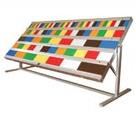
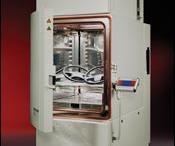
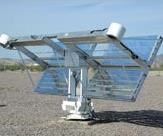



.png;maxWidth=300;quality=90)
















